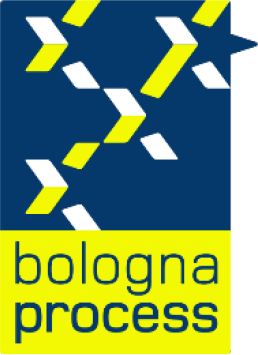Islamic Economics and Finance
Course Details

KTO KARATAY UNIVERSITY
İktisadi, İdari ve Sosyal Bilimler Fakültesi
Programme of Islamic Economics and Finance
Course Details
İktisadi, İdari ve Sosyal Bilimler Fakültesi
Programme of Islamic Economics and Finance
Course Details

| Course Code | Course Name | Year | Period | Semester | T+A+L | Credit | ECTS |
|---|---|---|---|---|---|---|---|
| 99700004 | Business Mathematics I | 1 | Autumn | 1 | 3+0+0 | 5 | 5 |
| Course Type | Compulsory |
| Course Cycle | Bachelor's (First Cycle) (TQF-HE: Level 6 / QF-EHEA: Level 1 / EQF-LLL: Level 6) |
| Course Language | Turkish |
| Methods and Techniques | - |
| Mode of Delivery | Face to Face |
| Prerequisites | - |
| Coordinator | - |
| Instructor(s) | Asst. Prof. Fatma ÇİFTCİ |
| Instructor Assistant(s) | - |
Course Instructor(s)
| Name and Surname | Room | E-Mail Address | Internal | Meeting Hours |
|---|---|---|---|---|
| Asst. Prof. Fatma ÇİFTCİ | C-115 | [email protected] | 7429 | Wednesday 14:00 |
| Asst. Prof. Fatma ÇİFTCİ | C-105 | [email protected] | 7429 | Tuesday 14:00 |
Course Content
1 Bases, Roots, Polynomials, Factoring, Fractions, Order in mathematical operations, Calculus use of the machine applications in the economy business and economics applications Applications of non-functional functions in business and economics putting methods functions and inverse functions Multiplication of matrices, Matrix expression of the system of linear equations, Extended (Enlarged) matrix, line operations, Gauss's method in solving linear equations matrices
Objectives of the Course
To explain the tools, techniques and subjects required while using mathematics in business and economics, and to teach its application in business and economics.
Contribution of the Course to Field Teaching
| Basic Vocational Courses | X |
| Specialization / Field Courses | |
| Support Courses | |
| Transferable Skills Courses | |
| Humanities, Communication and Management Skills Courses |
Relationships between Course Learning Outcomes and Program Outcomes
| Relationship Levels | ||||
| Lowest | Low | Medium | High | Highest |
| 1 | 2 | 3 | 4 | 5 |
| # | Program Learning Outcomes | Level |
|---|---|---|
| P1 | İslam İktisadı ve Finans alanında kuramsal ve uygulamalı bilgilere sahip olma, sahip olduğu bilgileri kullanabilme | 1 |
| P2 | İslam İktisadı ve Finans alanında edindiği bilgi, beceri ve yetkinlikleri kullanarak meseleleri tanımlama, veri toplama, değerlendirme, analiz etme, yorumlama ve çözüm önerisi geliştirebilme | 3 |
| P3 | İslam İktisadı ve Finans alanıyla ilgili farklı bilgi kaynaklarına erişip sayısal analiz ve araştırma yapabilme | 2 |
| P4 | Disiplin içi, çok disiplinli veya çok kültürlü gruplarda ve bireysel çalışabilme | 1 |
| P5 | Ahlaki değerler ve mesleki sorumluluk bilinci ile hareket edebilme | 4 |
| P6 | Alan uygulamalarının, evrensel ve toplumsal etkileri ile hukuki sonuçlarını bilme | 2 |
| P7 | Öğrenim dilinde yazılı ve sözlü iletişim kurabilme, en az bir yabancı dil bilgisine sahip olabilme | 4 |
Course Learning Outcomes
| Upon the successful completion of this course, students will be able to: | |||
|---|---|---|---|
| No | Learning Outcomes | Outcome Relationship | Measurement Method ** |
| O1 | Conducts joint studies with experts from various disciplines such as economics, finance, and law. | P.4.2 | 1 |
| O2 | Expresses topics related to the field in written form in the language of instruction. | P.7.1 | 1 |
| ** Written Exam: 1, Oral Exam: 2, Homework: 3, Lab./Exam: 4, Seminar/Presentation: 5, Term Paper: 6, Application: 7 | |||
Weekly Detailed Course Contents
| Week | Topics |
|---|---|
| 1 | Basic Concepts of Mathematics, Mathematics and Business Management, Economics, Energy Management, international trade and logistics, insurance and social security. |
| 2 | Numbers and Sets |
| 3 | Ratio, proportion and factoring |
| 4 | Percentage accounts |
| 5 | Functions and Linear Functions |
| 6 | System of equations, Graphical solutions, Supply and demand analysis, Breakeven analysis, Elimination and replacement putting methods |
| 7 | An overview |
| 8 | midtrem |
| 9 | Polynomial Functions, Exponential and Logarithmic Functions |
| 10 | Polynomial Functions, Exponential and Logarithmic Functions |
| 11 | Limit and Continuity |
| 12 | Derivative |
| 13 | An overview |
| 14 | Final |
Textbook or Material
| Resources | Prof.Dr.Önalan Ö.(2020), business mathematics |
Evaluation Method and Passing Criteria
| In-Term Studies | Quantity | Percentage |
|---|---|---|
| Attendance | - | - |
| Course Specific Internship (If Any) | - | - |
| Homework | - | - |
| Presentation | - | - |
| Projects | - | - |
| Midterms | 1 | 40 (%) |
| Final Exam | 1 | 60 (%) |
| Total | 100 (%) | |
ECTS / Working Load Table
| Quantity | Duration | Total Work Load | |
|---|---|---|---|
| Course Week Number and Time | 14 | 1 | 14 |
| Out-of-Class Study Time (Pre-study, Library, Reinforcement) | 14 | 3 | 42 |
| Midterms | 1 | 30 | 30 |
| Quiz | 0 | 0 | 0 |
| Homework | 1 | 31 | 31 |
| Practice | 0 | 0 | 0 |
| Laboratory | 0 | 0 | 0 |
| Project | 0 | 0 | 0 |
| Workshop | 0 | 0 | 0 |
| Presentation/Seminar Preparation | 0 | 0 | 0 |
| Fieldwork | 0 | 0 | 0 |
| Final Exam | 1 | 33 | 33 |
| Other | 0 | 0 | 0 |
| Total Work Load: | 150 | ||
| Total Work Load / 30 | 5 | ||
| Course ECTS Credits: | 5 | ||
Course - Learning Outcomes Matrix
| Relationship Levels | ||||
| Lowest | Low | Medium | High | Highest |
| 1 | 2 | 3 | 4 | 5 |
| # | Learning Outcomes | P4 | P7 |
|---|---|---|---|
| O1 | Conducts joint studies with experts from various disciplines such as economics, finance, and law. | 4 | - |
| O2 | Expresses topics related to the field in written form in the language of instruction. | - | 2 |
